Submitted by Varun Kumar
Steampunk, Intuitive Design Outwitting Computation, Is 2019 Tallinn Architecture Biennale's Winner
Estonia Architecture News - Oct 08, 2019 - 19:11 14568 views
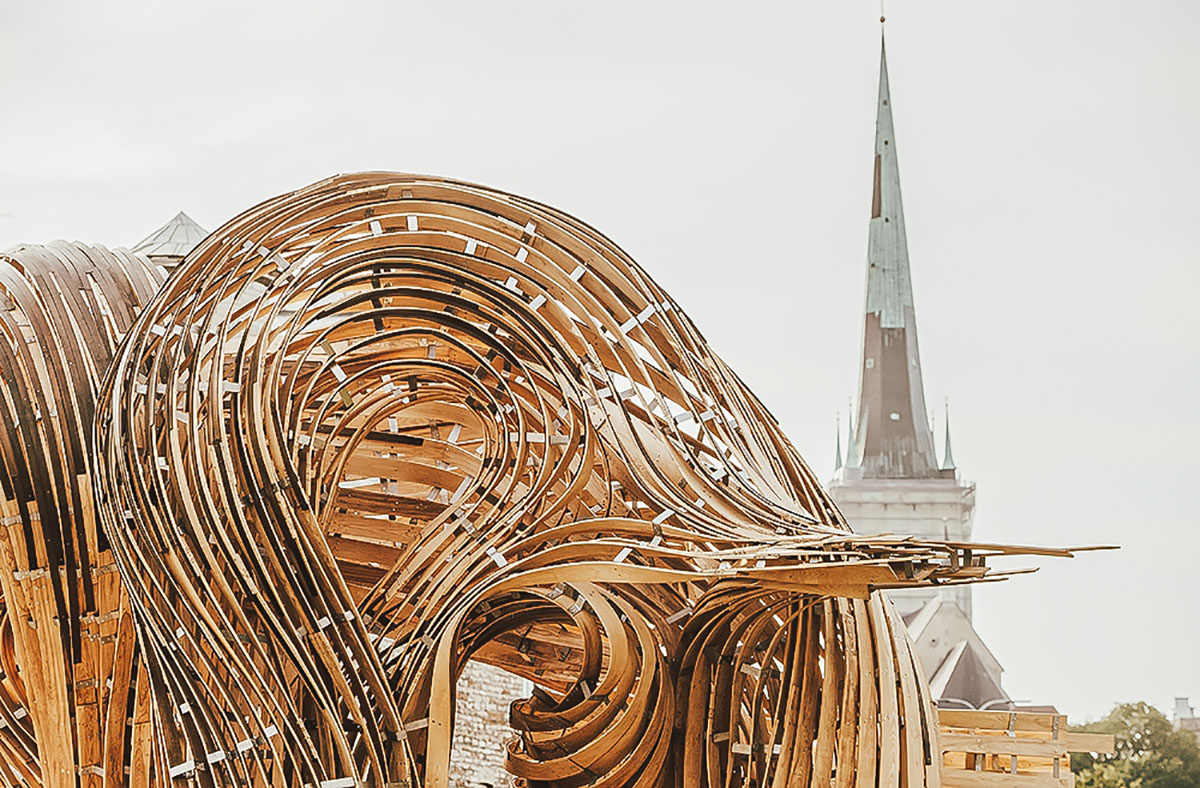
Steampunk is a pavilion design which emerged as the winner at the Tallinn Architecture Biennale (TAB) 2019’s Installation Program Competition-Huts and Habitats. The pavilion design was intuited with traditional nuances to defy that robotic computation and automation is needed to materialize visually sophisticated architecture.
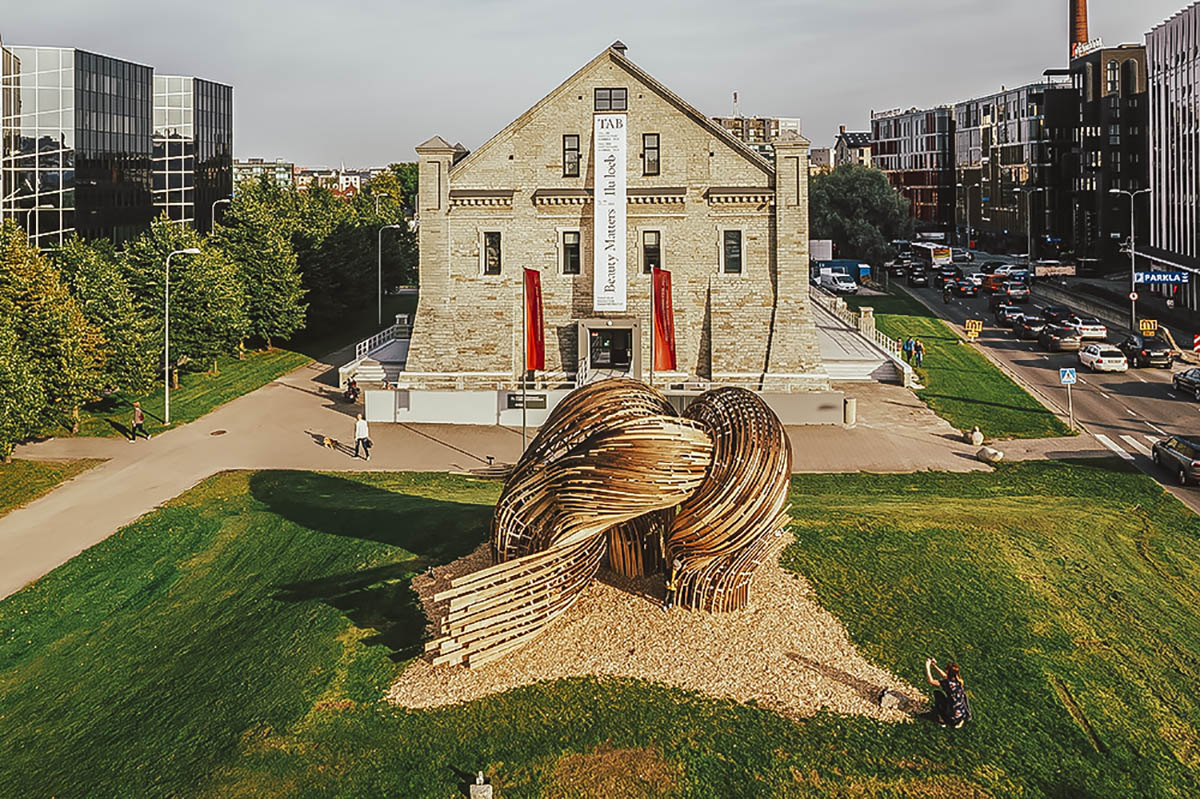
Steampunk is perhaps an argument by the designers that man’s hunches can ever bring any complex form to life, while today we’re often aligning to the command of Robotic language over all acts. As a matter of fact, the design could also argue that instinctive design could lift us off the crutches for our thoughts, brought about by computation.
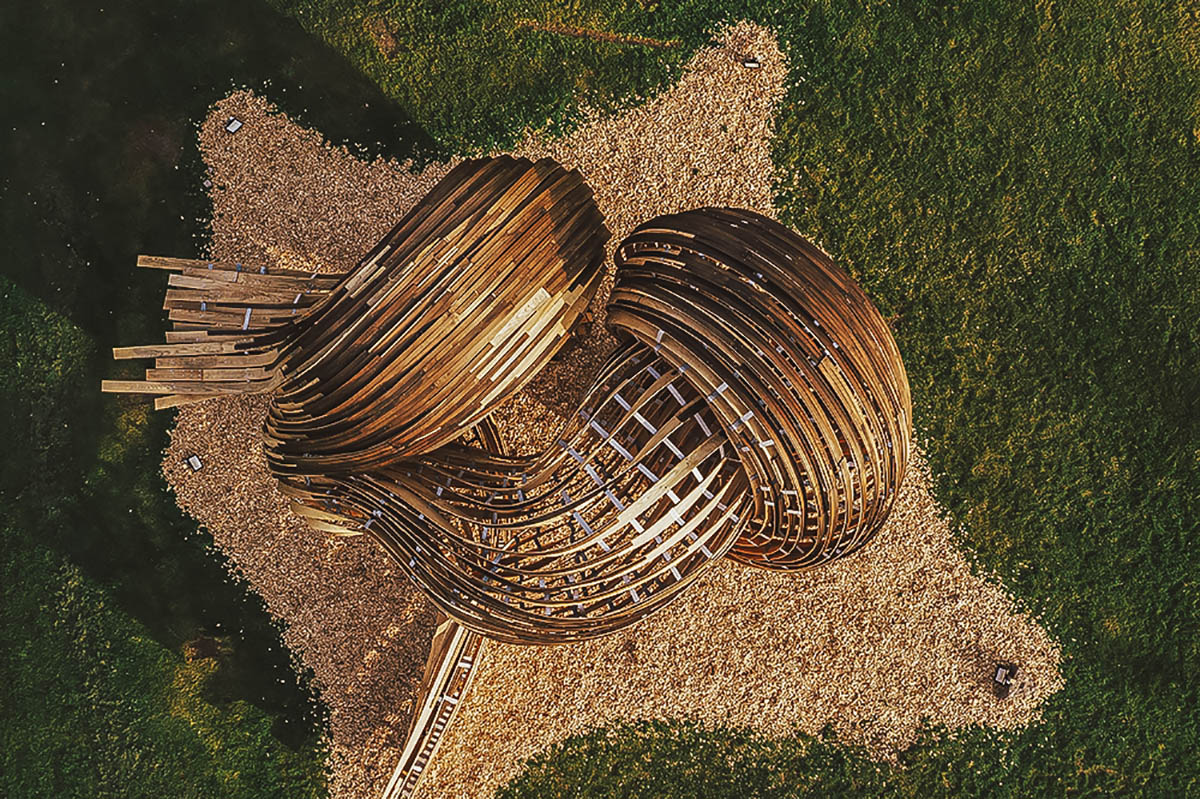
"Steampunk by Gwyllim Jahn, Cameron Newnham (Fologram, AU), Soomeen Hahm Design (UK), Igor Pantic (UK), and Format Engineers (UK) stands fiercely on top of a small mound outside the museum. The timber installation gives the topics raised during TAB a prominent visual manifestation in the cityscape and will remain in place until the next edition in 2021", describes the biennale.
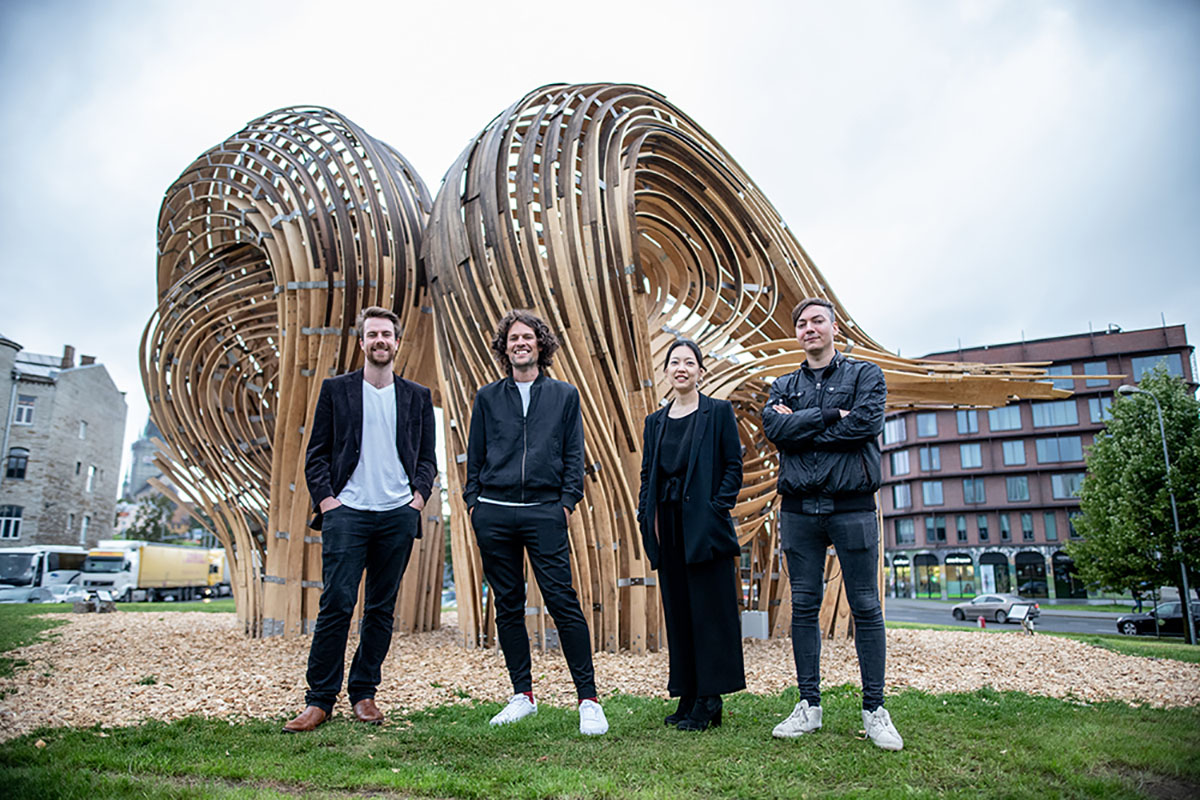
"Steampunk is a pavilion constructed from steam-bent hardwood using primitive hand tools augmented with the precision of intelligent holographic guides. As the designers of Steampunk we have not produced drawings or lines of CNC code from which parts of our design might be cut, printed or assembled and instead have developed an experimental approach to materialising architecture that serves as a deliberate polemic in the context of robotic production and automation", say the winners.
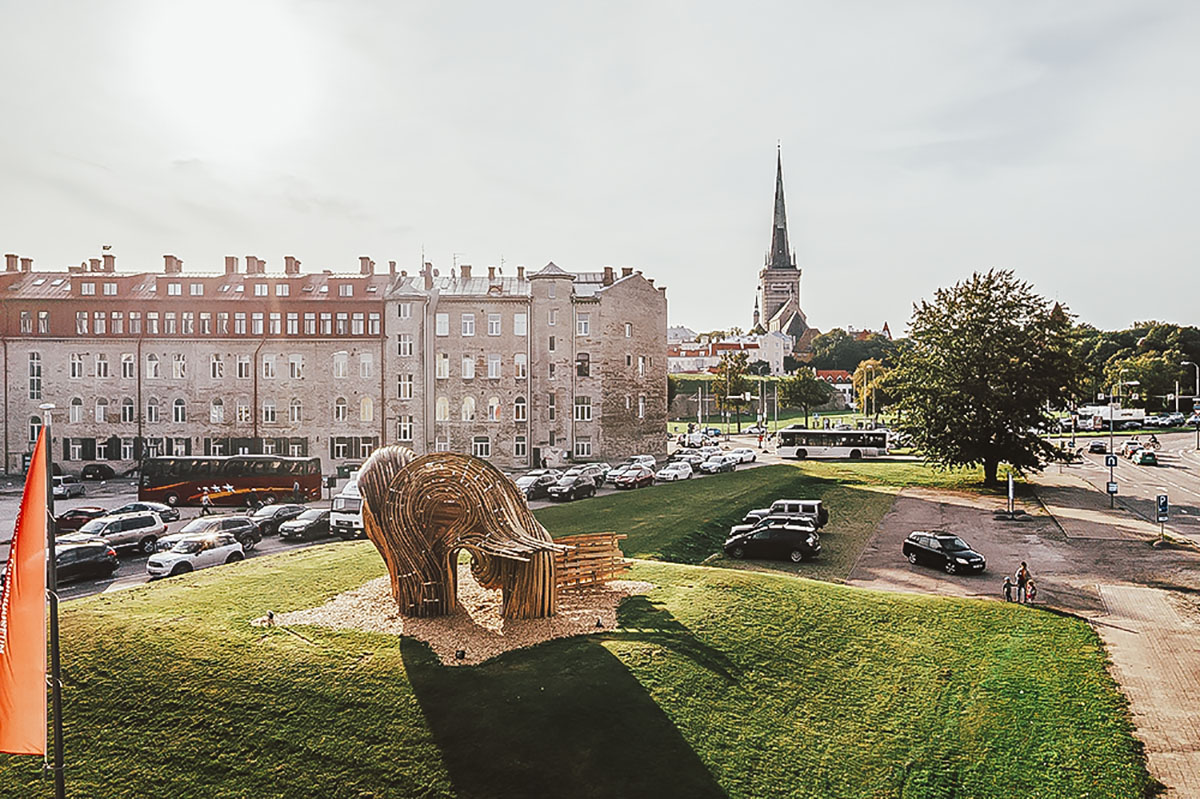
"While computer aided manufacturing and robotics have given architects unprecedented control over the materialization of their designs, the nuance and subtlety commonly found in traditional craft practices is absent from the artefacts of robotic production because the intuition and understanding of the qualitative aspects of a project as well as the quantitative is difficult to describe in the deterministic and explicit language of these machines", say the winners.
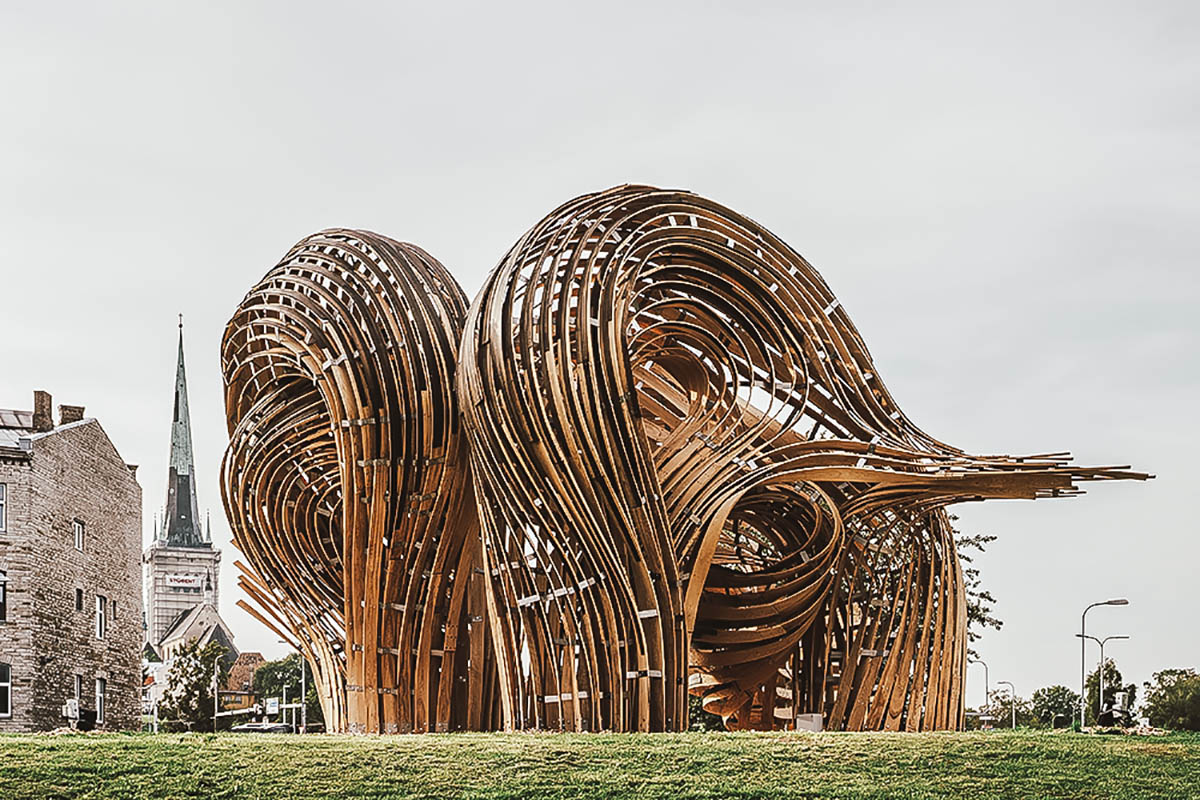
"We are interested in approaches to making that hybridize analogue construction with the precision and flexibility of digital models. By rendering digital models as holographic overlays directly within construction environments, fabricators can use their own expertise and inventiveness to produce highly intricate and complex objects entirely by following these holographic guides using relatively primitive analogue tools", say the winners.
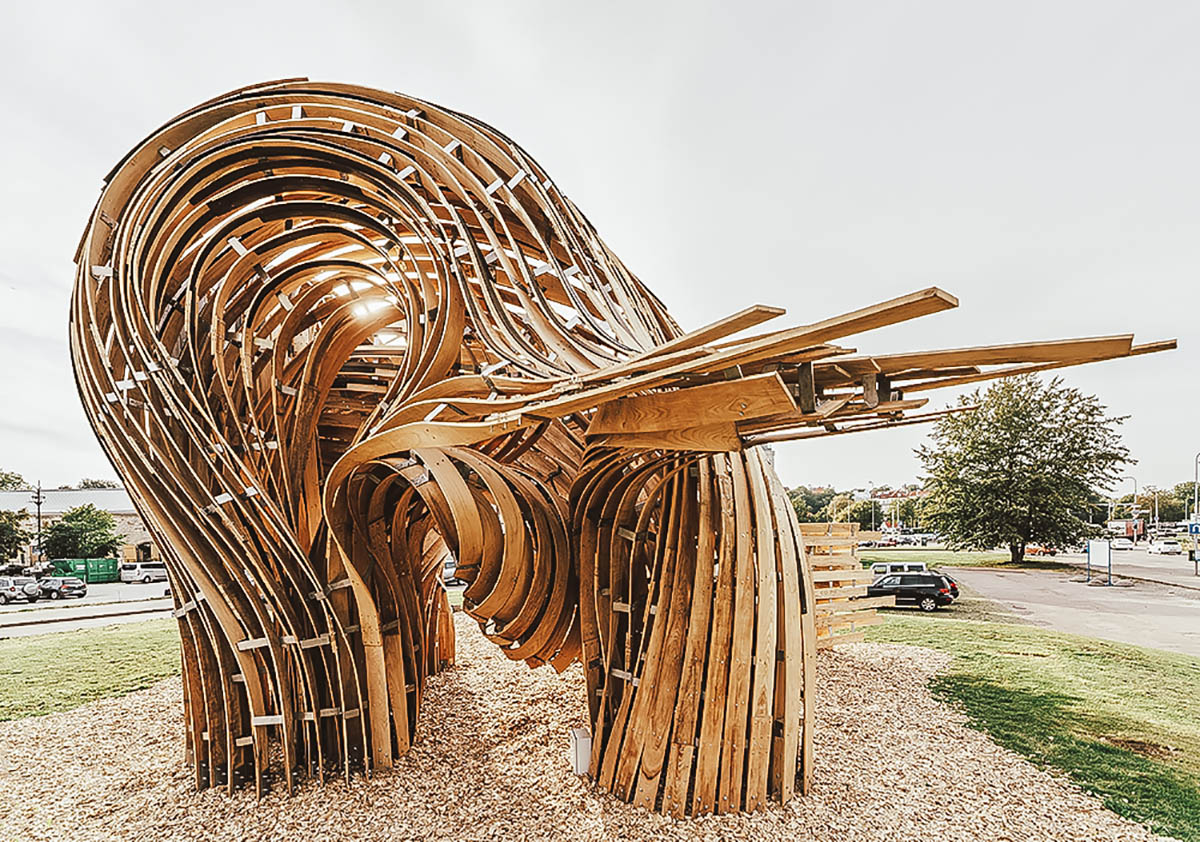
"This approach removes the necessity of anticipating every aspect of material behaviour in digital models and in so doing leaves open a certain degree of indeterminacy as material affects are discovered, desired and amplified during construction. It is this liberation of digital expression from the constraints of digital fabrication, together with the opportunity for nuance and material affects derived from material craft, that drive the architectural effects of the pavilion", say the winners.
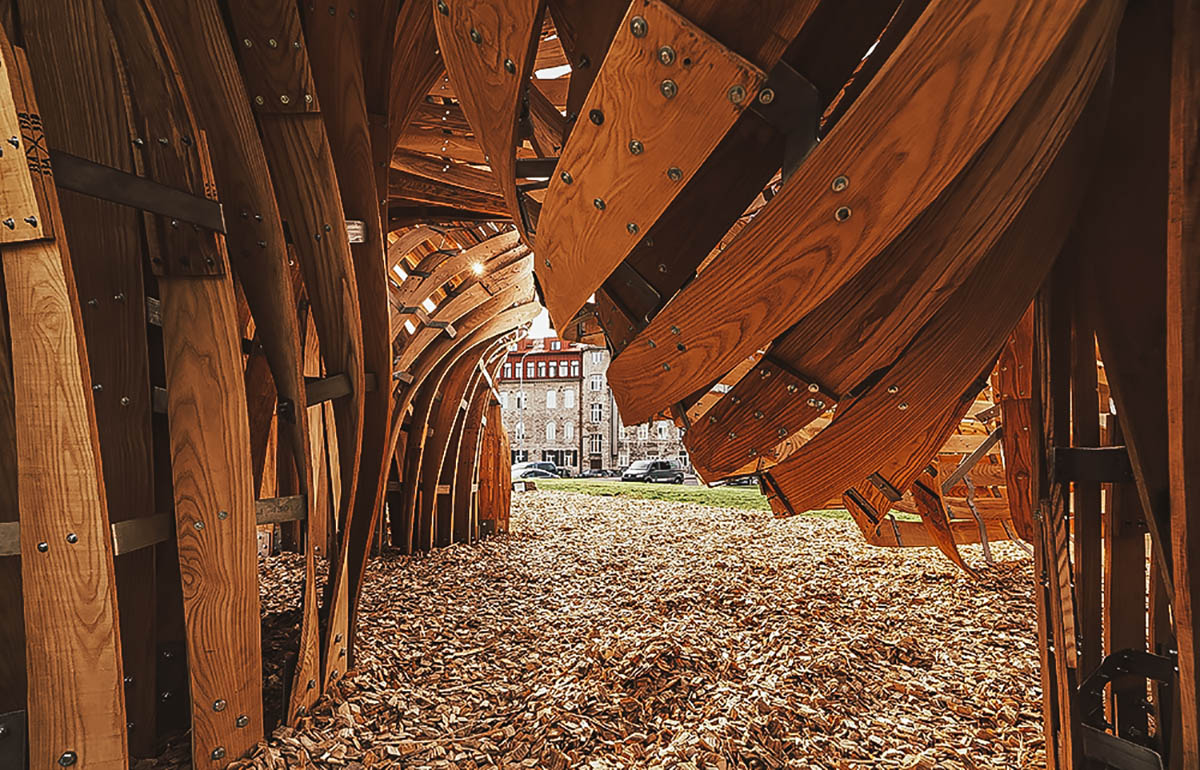
"The plan of the pavilion is a cross that divides the grassy mound of the Biennial site into four distinct spaces that frame views towards the old city of Tallinn and the Architecture Museum. The variable surface effects in the pavilion are a product of expediency, as bending three dimensional curves from straight 100x10mm boards forces the timber profile to twist along its length", say the winners.
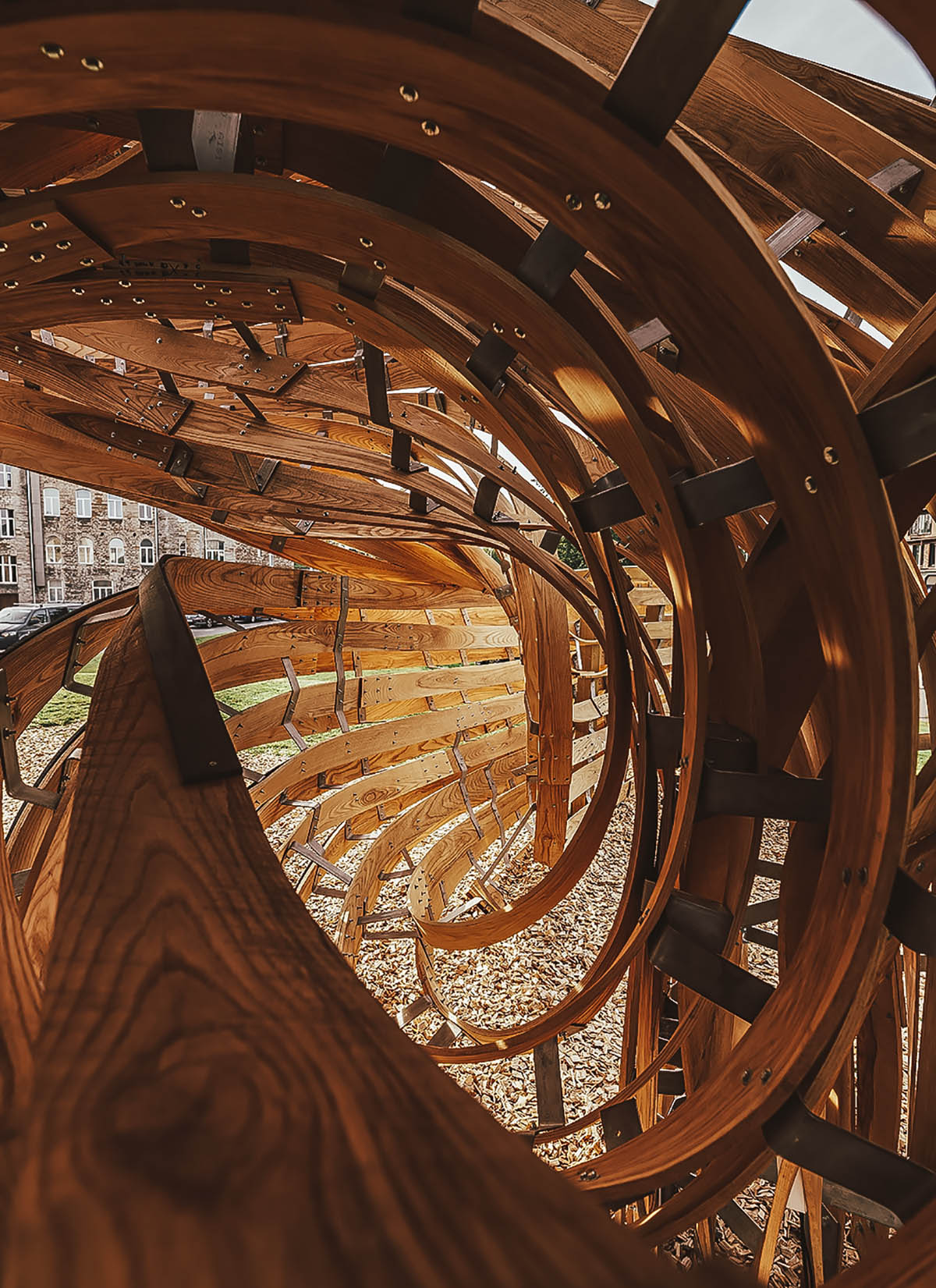
"This attempt to produce an architecture from standardised lengths of material is more akin to weaving than assembling, and twisting timber sections contribute stiffness and compression strength to a composite timber and steel shell. Tracing the lines of the woven timber leads from conventional orthogonal surfaces to the complete break down of familiar topology, toying with the ambiguity of the form of the knot, inside and outside, surface and volume", say the winners.
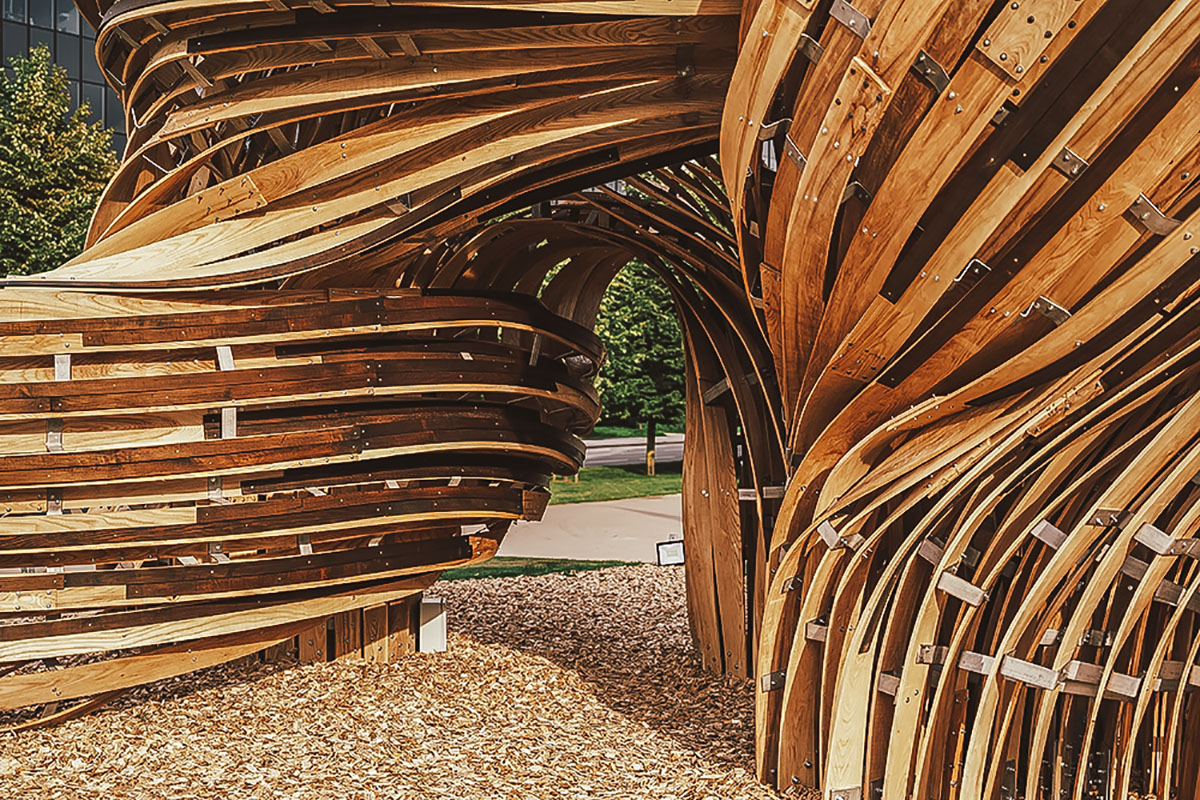
"In order to create a strong enough shell structure from light weight materials the pavilion also plays with positive and negative space, defining an intimate interior from a massive poche. The timber elements in the structure are fabricated following the somewhat arcane and notoriously difficult process of steam bending", say the winners.
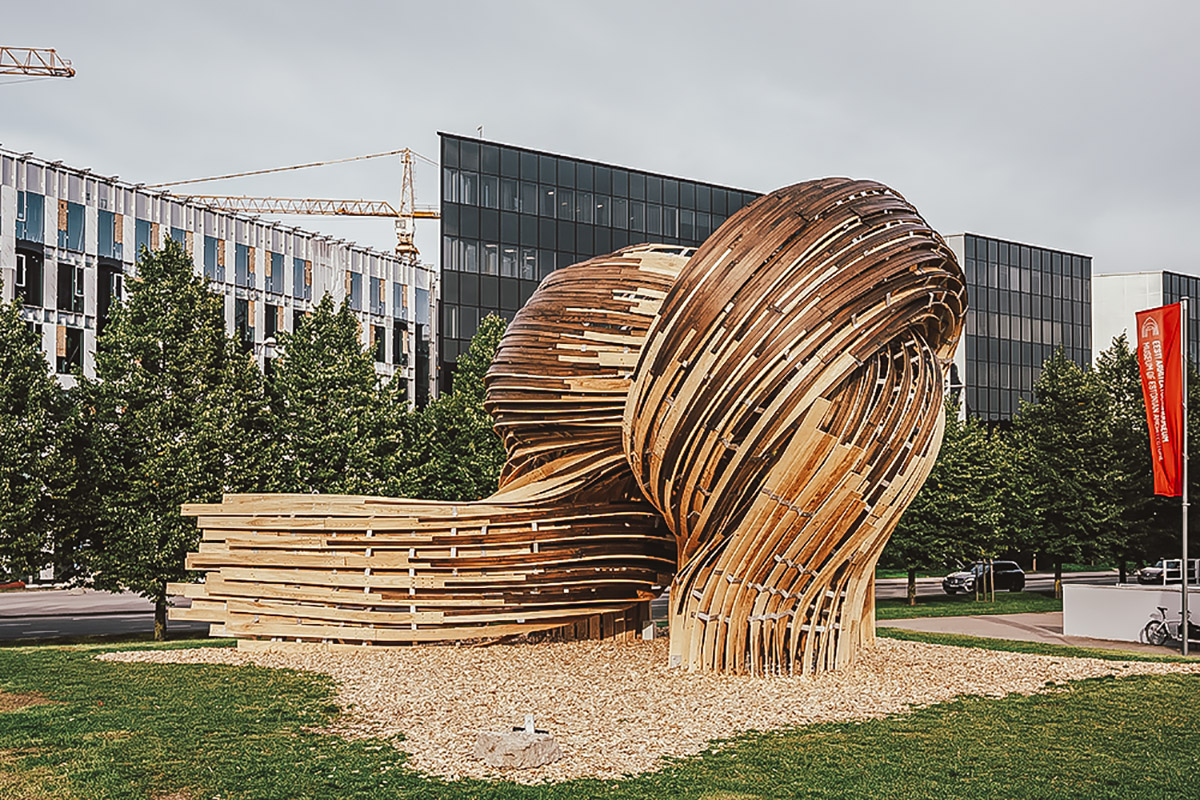
"Each strip is bagged, steamed, and bent over an adaptable, moldless formwork using a holographic model as a reference to the desired result. This fabrication process utilizes two forms of feedback: holographic models provide fabricators with clear visual feedback on the accuracy of the forming process and allow them to intuitively adapt fabrication techniques or formwork positions until parts match digital models within accepted tolerances", say the winners.
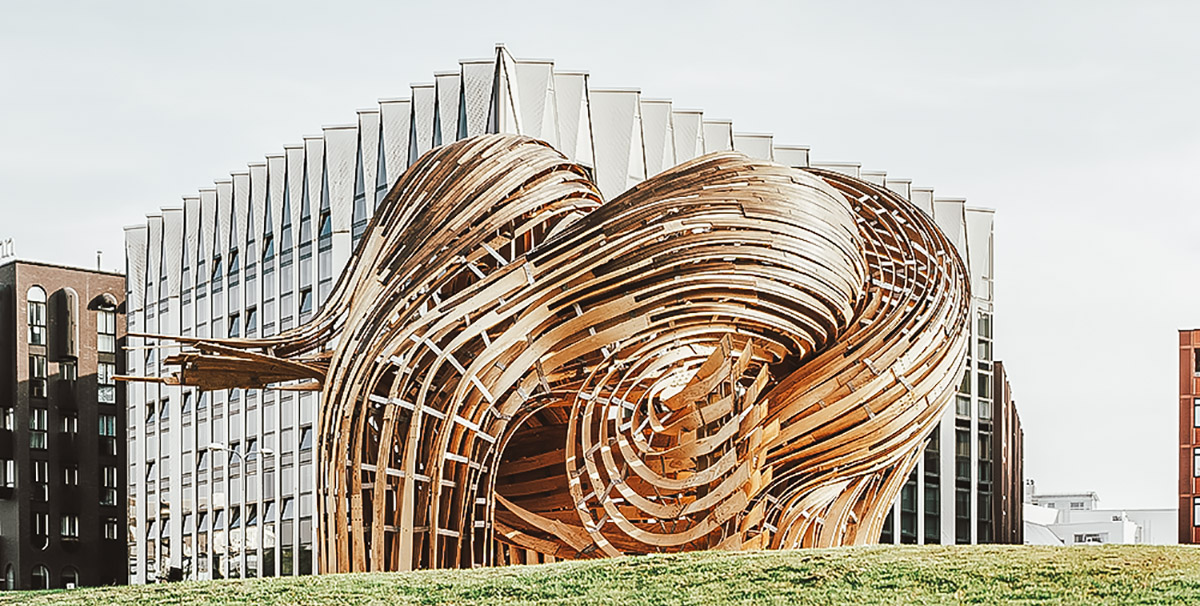
"Physical parts can also be digitized and fed back into the digital model, allowing the design to accomodate and adapt where necessary. In each case the feedback is a direct collaboration between designer and maker, between expected behaviour and observed results. The beauty of the project lies in this tension, in deciding when to give and take, when to adhere to preconceived design intent and when to abandon precision and begin to react", say the winners.
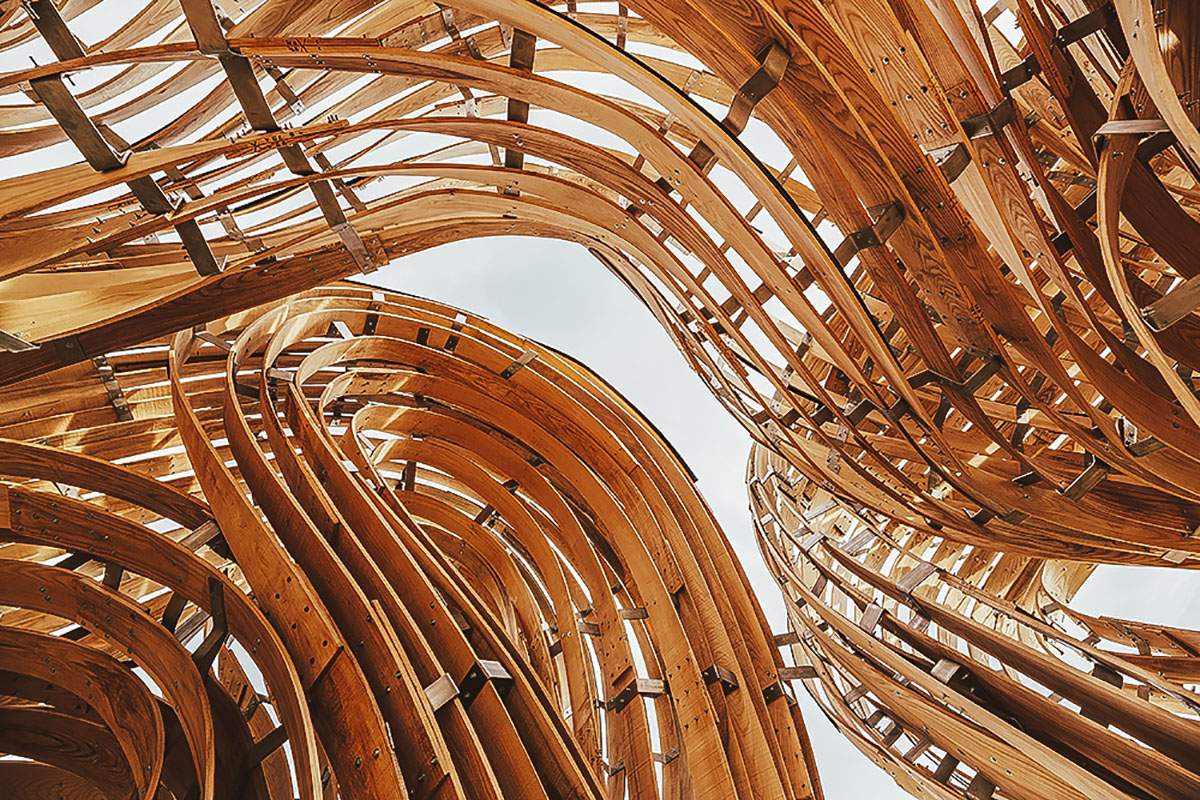
TAB, 2019 is its fifth edition and is organised by the Estonian Centre for Architecture. The curator of the biennale is London-based architect Dr. Yael Reisner. TAB 2019 has closed its opening week spanning September 11th to 15th, 2019. The biennale also welcomed a new record of nearly 2.000 visitors from more than 25 countries, covering Europe to Australia, the USA to Japan, and from Canada to Mexico.

This year the provocative theme Beauty Matters, celebrates the aesthetic experience in architecture, after almost 80 years of cultural bias. The biennale will continue till November 17th 2019.
All Images © Tonu Tunnel
